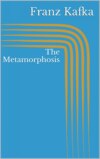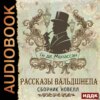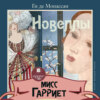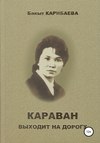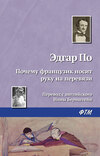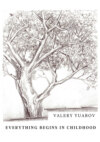Loe raamatut: «Ester»
Dedication
This book is dedicated to the kindest people I have met on my road of life – my mother Ester, my wife Svetlana, Doctor Mukhitdin Umarov, and my friend and mentor Raisa Mirrer.
From the Author
I consider it my duty and pleasant responsibility to express my great gratitude to my friend Raisa Isakovna Mirrer without whose help this book would perhaps not have been written. She not only inspired me to write but also put her soul and enormous experience as a literary editor into our common project.
Chapter 1. The Verdict
In April of 1993, my mama, as always, went to have her annual mammogram, a routine preventive test.
Mama’s doctor called a week later.
"Everything is fine," he said reassuringly, "but you'll need a follow-up test at the oncologist’s."
She was received by one of the leading oncologists at Long Island Jewish Medical Center, a very well-known New York hospital. Examining her x-ray, he pointed out a large light spot at the base of her left breast.
"We'll need to do a biopsy. I don’t think there's any reason to worry. Women your age," he explained to my mother, "often get hard lumps of calcium."
But when he came out of the room where the procedure was being done, the oncologist didn’t find it necessary to conceal his apprehension from me.
"It’s most likely a cancerous tumor. And it’s big – 3 inches in diameter. It’ll be clear in a week after I get the results."
A week passed spent in distressed waiting. And there we were back in his office. This time he was also open with Mother.
"Miss Yuabova, you have breast cancer. The tumor is rather large."
Mother sat with her arm up, trying to feel the tumor. The doctor helped her.
"Here it is… It’s very deep…"
I still couldn’t believe our misfortune.
"How can this be? Two years ago she had a mammogram, and everything was fine. That means that since then…"
"Unfortunately, the tumor has been growing for a long time. It was so deep beneath the surface that the apparatus didn’t detect it."
He asked us to sit in the waiting room. I sat down across from Mama, at the window. Outside lay a green valley bathed in sunlight as far as the eye could see, dotted here and there with small houses. Everything was bursting with life, growing, rejoicing, hopeful. But here, in the neatly furnished office, there was no hope. Here, the verdict was pronounced firmly – a long neglected cancer.
It’s interesting, I thought, which verdict is it for today? It’s not even noon yet. Is it the first or the second? I was afraid to look at Mama. I turned to her only after I heard the sniffling. She was crying, very quietly, as always, without complaining. She was looking down at her handkerchief, running her fingers over it as if seeking an answer to the question – what should be done.
I thought that I knew this woman, so unpretentious, quiet, always concealing her worries and ailments from us. She was patient and sad today when this new ordeal befell her. She must be trying to understand why life, which had never spoiled her, wasn't going to allow her a peaceful restful old age.
"Mama, don’t cry," was all I could say, "Don’t cry. Don’t be afraid."
"I’m not afraid. I’m sorry for all of you," she answered.
And I thought I knew her… My whole life, as far back as I could remember, passed swiftly, haphazardly, in torn fragments before my mind’s eye. And she was present in every fragment, our mama, our friend, our defender and support, so fragile yet so steadfast. Even when her life was in danger, she thought about us not herself. I wanted to tell her “Enough, Mama. Let’s think about you.” But I knew she wouldn't accept it.
I sat there feeling helpless and depressed. I didn’t know how to go on living.
The doctor called us in. We listened to his instructions. Mama needed surgery. But first, she had to undergo a course of chemotherapy and radiation to shrink the tumor. All of it was scary. I asked him about the side effects of the chemotherapy. The doctor answered. I asked more questions. The doctor wanted Mother to take part in the conversation and asked me to translate to her in detail from English. I didn’t want to hurt her anymore. I didn’t want to tell her that she would soon be losing her hair and that she would feel nauseated. I made up reassuring answers. They’ll perform an operation, and everything will be back to normal. The disease will go away.
She sat quietly in the corner, not showing any interest in our conversation. To my explanations she answered, “All right, I see. We’ll do what’s required.” And I continued to ask questions for I was afraid to miss something important, something that could help. But it was becoming clearer and clearer that there was nothing that could help, and that any measures they took would only slow down the disease.
The doctor had kind eyes. I saw and felt that he wanted to help us, but the thing was that he had no means to do it… Medicine itself had no means. In his long practice, Mama was one of hundreds of women who had had that terrible disease. My mama had become a statistic, nothing more. I felt so worthless because I didn’t know how to prevent it.
The drive home seemed to last forever. I didn’t quite understand how and where I was going. A plane flew over us. My Lord, I thought, we fly higher and higher, drive faster and faster, but in fact – how does that song go? "Dust in the wind. All we are is dust in the wind…"
Chapter 2. Hope
We stopped by Aunt Valya’s, simply because we needed to share our grief with someone close to us.
"It’s bad," Mama announced. Then she told Aunt Valya what had happened at the doctor’s office. She spoke calmly and quietly, as always.
The silence hung in the room. We were sitting on soft comfortable sofas. It seemed that what we were talking about was unnecessary and superficial. I wanted to relax and sit like that till I fell asleep and woke up with a light mind, as if born anew, with nothing terrible hanging over us any longer. But we needed to get up, to go somewhere, do something, make a decision.... But which one? And how?
"Esya, Valera, look here," Valya exclaimed suddenly. "Don’t you remember that herbalist from Namangan?"
The herbalist from Namangan… Not that I had forgotten about him, but it was an utterly unbelievable story. Actually, a whole number of unbelievable stories.
It all began with Valya herself. She had asthma for a long time, and none of the treatments helped. The person who helped her was the herbalist from Namangan. He diagnosed her in an amazing way – by taking her pulse. He determined that Valya had a bad liver, and her asthma was simply a consequence of her condition. He treated her with herbs.
Then my cousin Yura became his patient. Around that time, he was a student at Tashkent University, and during a chemical test in the lab he accidentally inhaled poisonous vapors. Yura didn’t notice anything, and at first he didn’t feel that anything was wrong. After a week he collapsed with an unbearably sharp pain in his stomach. The herbalist diagnosed him in his usual way – by taking his pulse. Then a long treatment with herbs followed. The healer did his job, and Yura recovered.
Another misfortune occurred. That time it was Valya’s sister. She had cancer of the lymph nodes, then breast surgery and metastasis, followed by despair and complete hopelessness. Valya rushed to the herbalist from Namangan again. He said that he wouldn’t be able to help this time because the disease had been long neglected. Valya begged him, pleaded with him. Then he began doing something incomprehensible. In addition to giving her herbal brews, he told her to apply warm calf manure to the afflicted breast every day, and only calf manure. He said that if she began to recover, pus would accumulate in some spot and then come out of her body. It happened a few months later – pus came out through the sole of her foot.
Those were incredible stories. I had taken them with a grain of salt. That’s why I had them in the back of my mind. A bad case of cancer and calf manure! But that woman's life was saved. Doctors confirmed that she no longer had cancer. It had happened. It really had, I thought. And what does modern medicine offer? It offers state-of-the-art equipment, which only helps to diagnose, and often not accurately. It has been established that breast cancer gene carriers need dual screening. That’s true, but there’s no cure so far. Surgery, radiation, chemotherapy – all that, at best, just stops the process, but it sometimes accelerates it… Cancer is the second most common cause of mortality, surpassed only by cardiovascular disease.
I understood that I would not be able to rid myself of those thoughts, that we would have to decide, to make a choice… But hadn’t I done that? Would I be able to give up this hope that had sparkled so suddenly? I was like a drowning man grasping at a straw.
"Why should you go to Namangan?" my accountant Lev asked me upon learning of our misfortune. "Many healers do pulse diagnostics nowadays. There are wonderful herbalist-healers in Chinatown."
It turned out that Lev knew one of those healers. His son had stomach problems. The doctors had failed to help him, but Kenny, a Chinatown healer had. I didn’t need much persuading.
The next day, we found ourselves surrounded by a thicket of street ads in the noisy Chinese enclave of enormous New York City. We reached the office of Kenny the healer in a quiet alley. There he had a tai chi school, a karate studio, and his office.
We spent quite a long time in his office. Kenny, a short man of indeterminate age like so many no-longer-young Chinese, behaved just like a regular doctor. He asked my mother what had brought her to his office, where she had pain, what kind of pain, and what conclusions the doctors had already drawn. Then he put Mother’s hand on a little pillow and began to feel her pulse near the wrist, just as all general practitioners do when they check the functioning of the heart. He put on a stethoscope and showed my mother into the adjoining examination room. When he came out of the room, he was alone (mother was getting dressed).
He said, "Unfortunately, I won’t be able to cure your mother. I’m sorry, but her disease is incurable. I’m really sorry. However, I’ll try to make her feel better. I’ll give you a combination of roots and herbs. Have her take them." And he left the office.
The same verdict, I thought. Mama will come out of the examination room, and what shall I tell her? What? You’ll need to take herbs that won’t cure you? There’s no cure. Let him take his herbs himself!
We took the herbs anyway. When we brewed them, they smelled terrible. It was a black brew with “fragments from a shipwreck." But what could we do? Mama began to drink that awful concoction, and in a few days she actually felt better. The healer hadn’t deceived us. He had done what he could.
But it was absolutely necessary to find the healer from Namangan. He was our last hope.
Chapter 3. 34 out of 36
Telephone communication in Uzbekistan was not the best. I don’t remember how many times I tried to reach Namangan without success. I either got a shrill-pitched signal indicating that the line was busy or it disappeared altogether. That was torture, pure torture and my impatience mounted with each passing day.
Yura offered to call his uncle who lived in Tashkent. Uncle Yakov knew the healer. We reached the uncle. He told us that the healer should be at home in Namangan but that he would soon leave for the hajj, which was right around the corner. It turned out that the healer was a pious Muslim and would travel to Mecca for the annual pilgrimage whenever possible.
By this time, my telephone fever had reached its climax. I don’t remember what day or time it was when Yura, who was holding the receiver, informed me, “We have a connection."
If I had been holding the receiver, I wouldn’t have been able to speak. My whole body felt paralyzed, and there was a lump in my throat. Meanwhile, Yura was already shouting into the receiver, "How do you do. May I speak to Mukhitdin Inamovich? I’m calling from New York, I… Yura Yuabov… Can you hear me?" He stopped to listen and, judging by his tense face, it was clear that the connection was bad. Then he mumbled something and hung up.
"He’s away. He’s gone to Mecca for the hajj. He’ll be back in a month or two."
I fell into a fit of rage. I swore. I kicked the telephone table. I was ready to beat my head against the wall.
"Calm down!" my cousin shouted at me. "Stop acting psychotic!"
"Calm down? Surgery is scheduled for May twenty-first. What shall I do? What? Do I have to make the decision myself?" I shouted in despair.
Yes, it was just three weeks before the surgery, but the main question hadn’t been resolved – whether to have the surgery before consulting the healer from Namangan, and then visit him, or to refuse to have the surgery before seeing him and to wait… to wait… to wait for a month or two or three to see him. What could be harder than waiting? And such a scary wait, with the risk of waiting too long.
That’s what I had to decide. I was the one who had to decide, because Mama was ready for anything. For the first time in her life, she seemed to have become the child, putting her life in my hands, waiting obediently for my decision, not expressing any opinion of her own.
But I was uncertain.
The oncologist insisted on surgery. "At least let her undergo chemo," he tried to persuade me every time I saw him. "The tumor will shrink, and it will be easier to operate."
"Don’t agree," Yura begged me. "Radiation and chemo kill cancerous cells and healthy ones, as well. Then the healer might refuse to treat her."
I hurried back to the oncologist’s. I had decided to tell him the whole truth about our hopes, about the strange healer who had calf’s manure in his arsenal of treatments. I could see Dr. Pace’s embarrassed glance over his eyeglasses.
"I don’t know anything about these practices, but I do believe in facts. Where is the proof?"
"The proof? What about saved lives? Isn't that proof?"
Dr. Pace nodded. "You know about the ones who survived. How about those who didn’t? How many people didn’t?"
I really didn’t know. I couldn’t argue any longer – with the doctor, with myself, with my pain. "Mama," I said, "you need to have an operation. Then we’ll go to visit the herbalist. Do you agree?"
"We’ll do whatever you think is necessary," Mama answered quietly.
It was a warm May morning. The hospital reception area, with its semi-circular window the size of the entire wall, was bathed in sunlight. Small sofas and coffee tables were scattered around. It was quiet and cozy, very cozy. Outside, an equally tranquil panorama spread out before my eyes on that cursed day – green vegetation, cars, people hurrying to the entrance of the hospital… all of them in a hurry, a big hurry. A doctor enters in a sky-blue robe and a nurse in a white one. “They must be in a hurry to cut up someone’s hand,” I thought maliciously. A car arrived. People got out of it. One of them had his hand bandaged. “Here’s their patient.” I wanted to think about anything else, to vent my ill will over my fate on something, to distance myself from my pain and worries. There, in an operating room beyond the closed doors they had been doing something to my mother for three hours now.
Time dragged on unnaturally slowly. It was so quiet in the reception area, so quiet. Almost everyone sat there without moving. Now and then, doctors appeared and sat next to those who were waiting, and they whispered things to each other. I tried to make out what they were talking about. Some of then listened, nodded, and smiled. That meant everything had gone well. One woman leaned against the back of the sofa and covered her face with her hands, crying. Another jumped to her feet, uttered a cry and rushed out. Grief, grief, grief all around…
Then it was my turn. Dr. Pace was approaching me. It seemed to me that he was walking very slowly, as if pondering something, rubbing his wrists. Then he looked at me, and again, it was that kind glance of his that I was now afraid of.
"How did it go?" I don’t know whether I actually said it or just moved my lips.
"She was great. She fell asleep right away. I completely removed her breast."
I waited for him to continue. I had to know. Even in my mind I tried to avoid the hated word. He understood. He was a doctor. He had to tell me the whole truth, pure and unvarnished.
"At the base of her breast I removed 36 lymph nodes. Unfortunately, almost all of them were… somewhat hard and paler than usual."
Everything was clear. I would receive the official results after the lab tests, but I had no doubts about the diagnosis of the experienced surgeon.
"Valera," I could feel him tensing up. Poor man, what a difficult profession. "It’s up to you to decide about future treatment. Your mother will live another two to three years without chemo. There are three types of breast cancer. The one your mother has is the most aggressive. It’s incurable."
Those numbing words pierced my brain. I wanted to hide my heavy head somewhere.
"Sometimes, a bone marrow transplant can be done. But that…" Dr. Pace hesitated and finished with difficulty, "would be like bringing a dead person back to life. It’s a very difficult procedure."
The lab results were ready in a week. Thirty-four of the 36 lymph nodes contained cancerous cells. Her cancer had metastasized.
Chapter 4. Uzbekistan – So Far Away and So Close
"You need to walk more, Mama, another lap, there and back."
I was holding her by the arm. She shuffled slowly, with difficulty, followed by her rolling IV-drip. She was so weak, so tired and slowed down by the anesthesia. I tried to talk for both of us.
"The doctor is confident that he had removed everything, down to the roots, Mama. Now it will be all right," I lied, avoiding her eyes. I was constantly afraid that she had already guessed.
"You’re by my side, Son," she said leaning on my arm. "That’s the most important thing."
Dr. Pace tried to get his patients out of bed on the third day after surgery. “The more you move, the sooner you'll be back to normal,” he liked to repeat. I signaled my agreement with him, but I was worn out with pity for her.
We paced slowly up and down the hospital corridor. Mother and son, we were both glad to be together, to have an opportunity, even under such sad circumstances, to be together. Mother was entirely overwhelmed by it. Her son was by her side; he was with her. Everything else was minor. No illness could spoil that for her. My mood was gloomier. I wasn’t happy. I wanted to have my mother by my side always. None of us ever parts with this childhood certainty, this youthful feeling that Mama will always be there for us. But now that “always” was not so infinite.
We paced the corridor, mother and son. She smiled. I also smiled and acted reassuring, lying, looking straight ahead, down the emptiness of the corridor. I didn’t want to look into the wards.
This was the oncology department. It had many wards, each with three or four beds, and they were almost all occupied. How pale and gray the faces were. The patients lay there, staring indifferently at television sets attached to the ceiling. I had the sensation that they were waiting for something to happen. But what? I didn’t know. Or perhaps I could guess.
In those days, I was wrapped in darkness. We had lost many of our close friends in the last few years – young and old, healthy and sick. Death was merciless. With each loss, I felt our circle of friends becoming smaller, continuously shrinking. The loss was also coming closer to our family. Now it was very close. Had our turn arrived?
I tried to drive such thoughts away, to rid my mind of them. But they didn’t obey me. Strange sensations accompanied them. Blurry white shapes began to appear at the end of the corridor, mysterious apparitions. They were doing something. They were stirring. I found myself trying to get a better look at them – perhaps they wanted to explain something to me? But then I would shake my head and turn away. What lunacy this was! I was simply exhausted.
Mama was back home on the fifth day after the operation. Those were the American hospital regulations. However, it was better, calmer at home, without all those horrible things that go on at a hospital. Besides, the decision had been made. We were not going to wait here, on the other side of the world, for the healer’s return from the hajj. We would go to Uzbekistan and wait for him there. I informed Mama on our first evening at home.
"We’ll make the reservations and leave in a couple of weeks."
She responded calmly, as always, "Whatever you like… Is the healer back?"
"Not yet. He'll return eventually. We’ll wait for him in Tashkent. It’s easier to get to Namangan from there."
Though “to get there” from America, wasn’t that simple. We needed Uzbek entrance visas. No one knew where to get them. Telephone calls to the Uzbek Consulate General in New York went unanswered. That was a mysterious institution. Perhaps it didn’t actually exist. But since our itinerary was via Moscow, we decided that we would get our visas there.
We made preparations for the trip with a strange uneasy feeling. The homeland had remained the homeland. The memory of it, the longing, had a life of its own that wasn't always on my mind or perceptible in my soul. It was as if it always existed in the background, usually subdued, but now and then it revealed itself in painful and acute spurts. Now it felt as if it had left its underground hiding place and burst out into the open. But it also meant real reservations and worries. My ill mother and I were going to our homeland. We hadn’t been there for 15 years, and the impact of immigrating was still as intense as ever. Here in New York, whenever we visited friends or met someone on the street, or talked to someone on the phone, we received information that I couldn’t call pleasant or reassuring.
"Did you know the Niyazovs? A day before their departure, men in masks entered their house, robbed them and beat them up."
"Have you heard about the Yusupovs? He went there to sell cars. He was shot… his poor mother… poor kids."
My mother had also heard such news. She was going there filled with fear, but not for herself, of course.
It was a gloomy day. Moscow. The Sheremetyevo Airport. A big crowd welcoming those who had just arrived, people hurrying somewhere – the usual airport bustle. I tried to concentrate on looking for a person I didn’t know who was supposed to be holding up a piece of paper with my name on it. Or perhaps that paper would be attached to his coat? Oh, maybe he had forgotten to bring it along? What’s the name of the person who was asked to meet us? Anatoly Kolesov. Where was he? What if he had fallen ill?… or… Calm down and look around one more time.
At that moment I heard, "Are you Valera? Yes? Welcome."
"I’ll be damned," I said to myself. "He figured out who I was on his own."
Anatoly tuned out to be friendly and nice – a tall, light-haired fellow with a pleasant face. It immediately took a load off my soul.
First, we went to the Consulate General of Uzbekistan. On the surface it was a very imposing consulate – a wonderful building with granite steps, shiny floors, many red rugs… and empty corridors. But at last someone opened the door, perused our American passports and asked us to wait. We spent over an hour in the cool empty corridor surrounded by silence and crimson rugs.
Finally, we were invited into an office where a representative of the Uzbek state, a tall gloomy man, told us strictly, “In order to enter Uzbekistan, you need visas. There are no visas in your passports. Why? Where are they?"
I explained, “Your Consulate General in America doesn’t work. No one answers telephone calls.”
“That can’t be true,” the official answered gruffly in a measured tone.
I repeated that my experience had been exactly as I told him.
He continued his interrogation, “Why do you want to visit our country? For medical treatment? What? Are there no doctors in America?”
“We have tried them there. Now we would like to try someone… in your country.” I pronounced “in your country” with difficulty. It sounded somewhat ridiculous. In fact, I was going to the place where I had been born. What an idiotic thing borders were, after all.
“What’s the name of the doctor?” he asked for no reason. I answered. “I haven't heard of him. I don’t know him,” he said.
Oh, my Lord, will this be a reason not to grant us visas? What terrible red tape. I was no longer accustomed to it. I grew nervous. I wanted to answer him defiantly, but I had to exercise patience.
Then, suddenly he said, “You will have to see the Consul and explain to him what you have just explained to me, but he won’t believe you and won’t approve your visas.”
I almost choked on my words: “It can’t be true…"
But he stopped me with a gesture. “Look here. You were born and grew up in Uzbekistan?" He was looking at my mother. Mother nodded. “And your parents are buried there?” Mother answered, “In Samarkand.”
“Aha,” I thought, the conversation is shifting to a different plain, a more comprehensible one. They want money… But how can I offer them a bribe? A typist was rattling away on her typewriter nearby. Another staff member was concentrating on reading some papers.
"All right," he announced loudly and almost solemnly. "Your parents are buried in Samarkand. You left your hometown a long time ago and now you wish to visit their graves. That’s good," he turned toward his staff members as if inviting them to approve our intention. "That’s very good. You are really the loving daughter and grandson," he concluded enthusiastically and picked up the receiver. "Aziz Sharipovich? I have a family from America here… Yes, formerly from Samarkand, our people… The reason? It's a very noble one – to visit their parents' graves. Shall I send them to your office?"
The next office was even grander than the first one. It was large, with a high ceiling and windows and a huge flag of the republic on the wall. The green flag nicely complemented the somewhat colorless interior of the room. The Consul, an elderly man whose name, Aziz Sharipovich, we already knew, was installed imposingly behind a small desk and was sending inquisitive glances in our direction. I had been wrong to assume that it would be a businesslike part of our meeting. He began his interrogation.
"So! You left long ago. How is it there?"
"A bit difficult," I began, but Aziz Sharipovich wasn't interested in my answer. He had his own agenda.
"I’ve never understood people who gave up everything and left. I can't understand that. Why? Was our life so bad?"
I didn’t want to answer. Why would I? Didn’t he know that he was lying? Does he really believe that there was no oppression, no discrimination? Did he really think that people had just abandoned the homes where they had lived for such a long time, giving up everything and leaving? And if he really was so blind, it was hardly possible that I could open this bureaucrat’s eyes and he would become intelligent, kind and sympathetic. Aziz Sharipovich continued his didactic monologue.
"In my position, I have seen many of those who left Uzbekistan, the ones like you. Many of them were sorry they had done it. Some of them returned… with my help. What about you?"
I didn’t want to answer and, shrugging my shoulders, I mumbled something incomprehensible.
Then suddenly I heard my mother's voice. My silent mother began to talk, and not just talk, but talk in Uzbek. Her voice sounded melodious and beautiful, almost tender. The Consul raised his eyebrows. The Consul smiled. The Consul joined in. He pulled the teapot toward him and poured a fragrant stream into some tea bowls. Then smiling, almost cordial, the Consul offered mother a bowl of tea.
"You’re a real trooper," he exclaimed after talking to mother for a few minutes. "So many years have passed, but you still remember everything, and the language, and…"
A pause followed. Aziz Sharipovich finished his tea, put the tea bowl down and summed up the conversation decisively, "All right, three weeks – Tashkent, Samarkand and Namangan. Naturally, you know that it’s necessary to pay for visas. How much? Mmm… 800 dollars."
I’d already realized that this was a show in two acts performed solely for the sake of money, in which the lines changed slightly depending on the audience who were also involuntary participants. The closing line “It’s necessary to pay for visas” never changed. At any rate, payment for visas was a legitimate procedure. But that amount, that additional payment for the diligently performed show, was highway robbery by an official entity…
"Pardon me, Aziz Sharipovich, we are from America, but even there 800 is quite a large sum."
We bargained until we finally got it down to 350. We left for Tashkent that same night.




